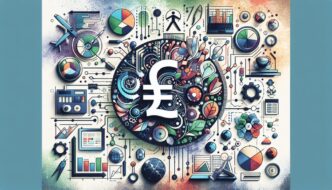In the fast-paced world of Forex trading, keeping up with market trends and updates is crucial for success. Whether you are a seasoned trader or just starting, understanding current events and their influence on currency exchange rates can significantly enhance your trading strategies. This article explores the latest developments in the Forex market, highlighting key trends and offering actionable insights.
Understanding the Forex Market
The Forex market, or foreign exchange market, is the largest and most liquid financial market in the world, where currencies are exchanged globally. Here’s what you need to know about it:
- 24/5 Market: Forex operates 24 hours a day, five days a week, allowing traders to participate at any time.
- Major Currency Pairs: The most traded pairs include EUR/USD, USD/JPY, and GBP/USD, which account for a significant portion of global currency trades.
- Influencing Factors: Economic indicators, geopolitical stability, and market sentiment play essential roles in currency valuation.
Key Trends in the Forex Market
Recent trends in the Forex market reflect the evolving economic landscape. Here are some crucial developments to watch:
1. Impact of Central Bank Policies
Central banks exert a powerful influence over the Forex market through interest rate decisions, quantitative easing measures, and economic forecasts. Recently, the Federal Reserve has maintained a cautious stance amidst inflation concerns. In contrast, the European Central Bank has indicated a potential shift towards rate hikes. This divergence in monetary policy could lead to increased volatility in currency pairs.
2. Geopolitical Factors
Political events can trigger significant fluctuations in currency values. The ongoing tensions between major economies, such as the United States and China, affect investor sentiment and currency performance. Traders should keep an eye on:
- Trade agreements and tariffs
- International sanctions
- Political elections and referendums
3. Technological Advancements
The rise of Fintech has transformed how retail traders access the Forex market. Through online trading platforms, advanced algorithms, and trading bots, individuals can execute trades more efficiently. Key trends include:
- Increased use of artificial intelligence for trading strategies
- Growth of mobile trading applications
- Real-time data analytics tools to inform decision-making
Recent Updates and Data Analysis
Staying on top of recent market updates is equally important. Below is a summary of key events and data impacting the Forex market:
| Date | Event | Currency Affected | Market Reaction |
|---|---|---|---|
| September 2023 | US Non-Farm Payrolls Released | USD | Appreciation against most major currencies |
| October 2023 | ECB Rate Decision | EUR | Short-term volatility as traders react |
| November 2023 | Chinese GDP Growth Rates | CNY | Weakness against USD due to lower growth |
Benefits of Analyzing Forex Trends
Understanding and analyzing trends in the Forex market offers several advantages:
- Informed Decision-Making: Identifying market trends helps traders make educated decisions on entering or exiting trades.
- Risk Management: Recognizing potential market shifts allows for effective risk assessments, reducing chances of loss.
- Improved Timing: Forex trading is all about timing. Knowing when to act can enhance overall profitability.
Practical Tips for Traders
As you navigate the Forex market, consider these practical tips:
- Stay Informed: Regularly check Forex news sources and updates from financial institutions.
- Use Technical Analysis: Chart patterns and indicators can aid in predicting future price movements.
- Develop a Trading Plan: Establish clear goals, risk tolerance, and exit strategies before trading.
Case Studies: Successful Forex Strategies
Looking at successful trading strategies can provide valuable insights:
Case Study 1: Trend Following
A trader who adopted a trend-following strategy profited significantly from the USD appreciation following positive economic indicators. By leveraging moving averages to confirm trends, they executed trades aligned with market momentum.
Case Study 2: Fundamental Analysis
Another trader focused on fundamental analysis and capitalized on the volatility surrounding the ECB’s monetary policy decisions. By positioning themselves before significant announcements, they maximized their profit margins during rapid market movements.
Conclusion
The Forex market remains a dynamic and complex arena that demands traders and investors stay current with trends and updates. By understanding the influence of central bank policies, geopolitical developments, technological changes, and analyzing data, traders can enhance their strategies and improve their chances of success. As you move forward, keep informed, adapt your tactics, and embrace the ever-evolving landscape of the Forex market.
For continued success, remember to stay engaged with reliable sources, utilize analytical tools, and refine your trading approach as new trends emerge.







